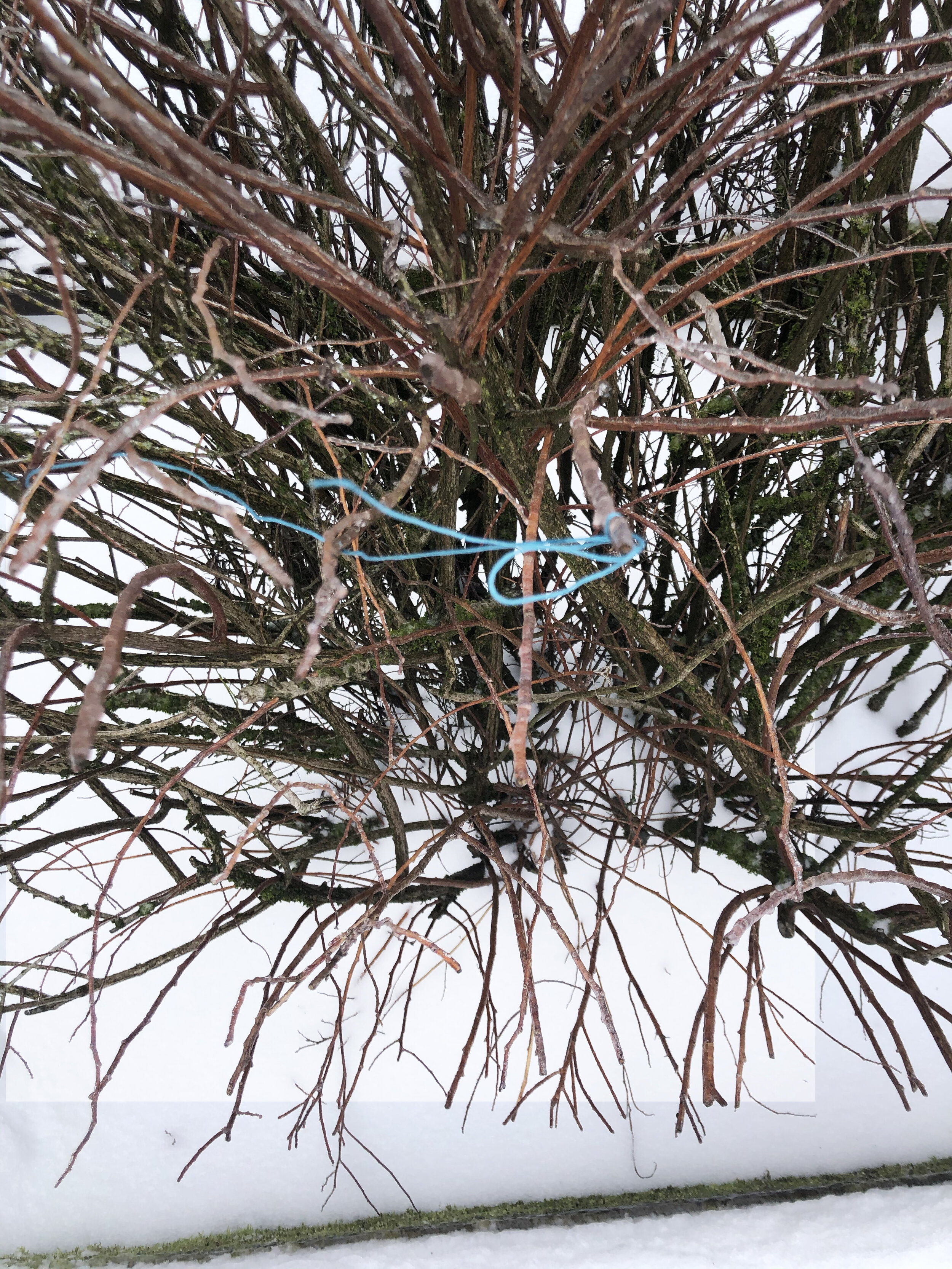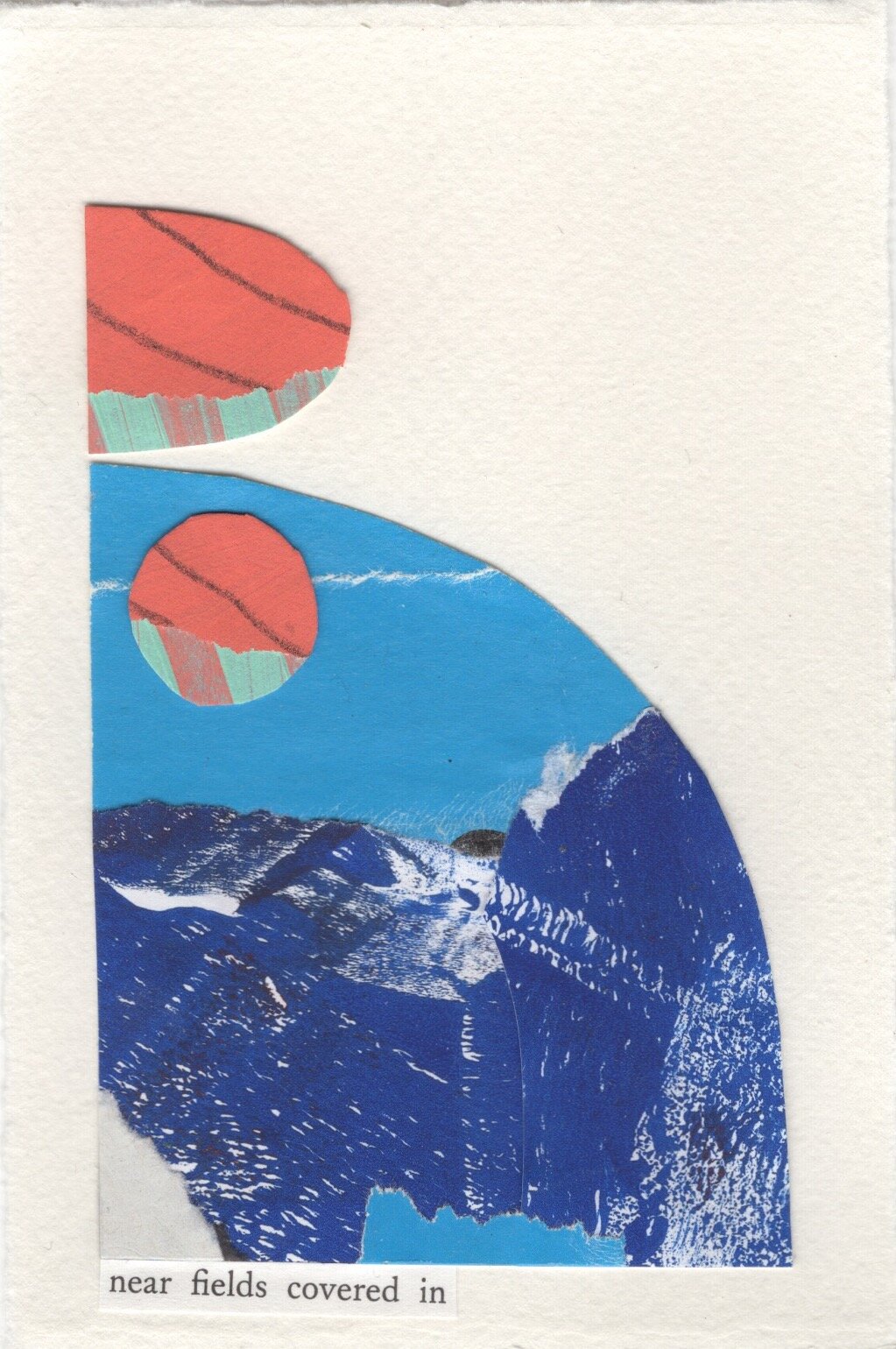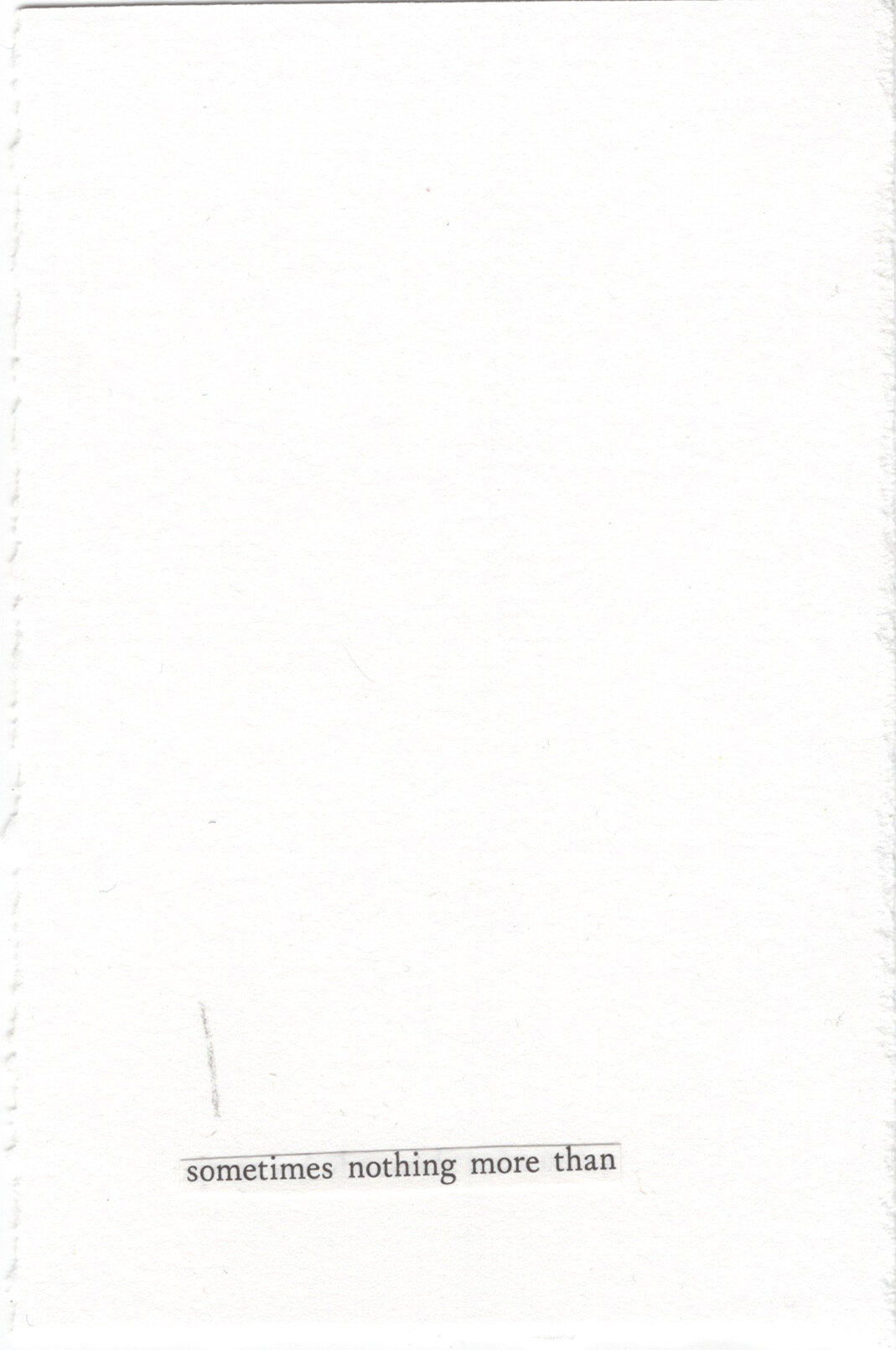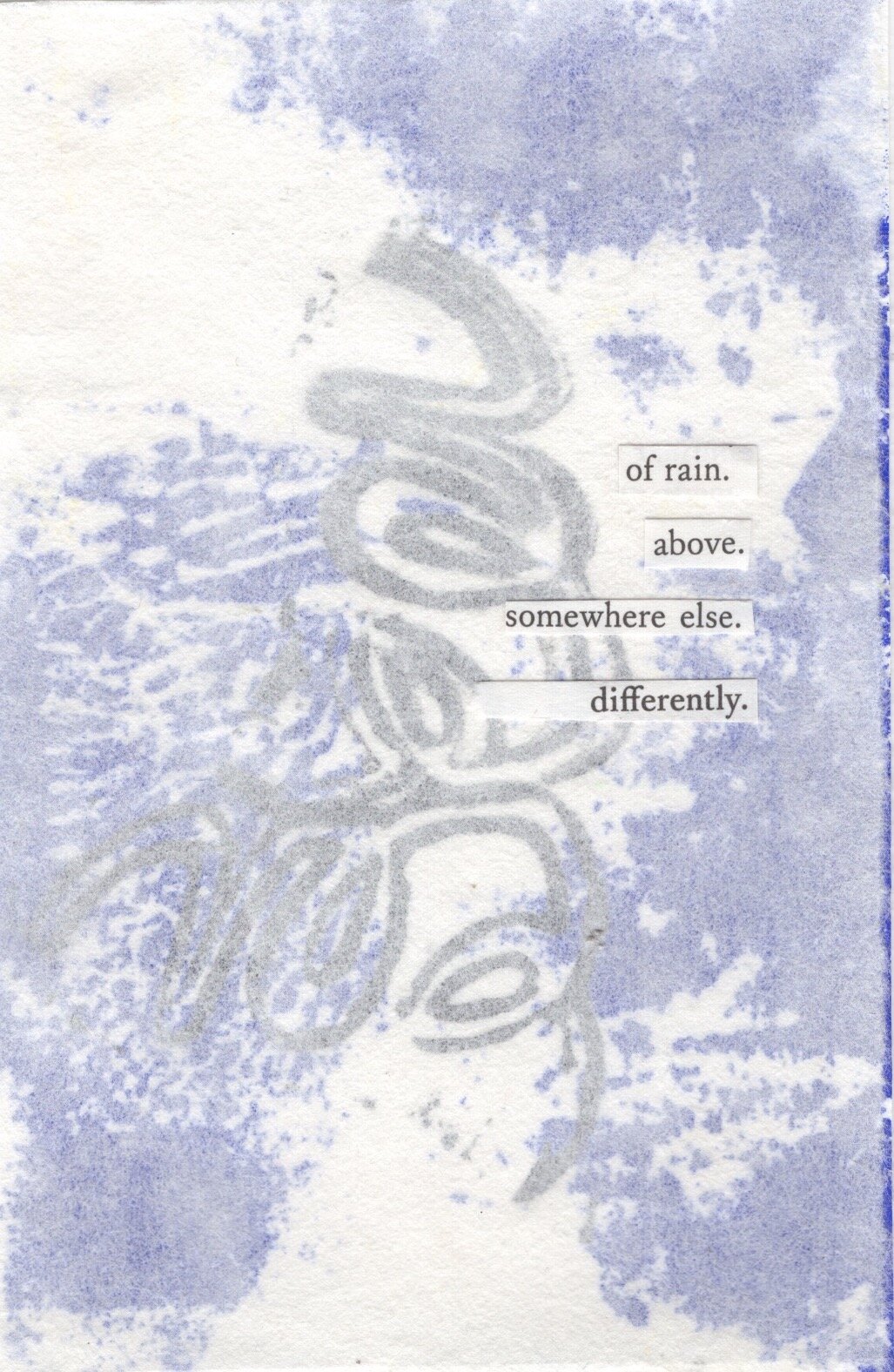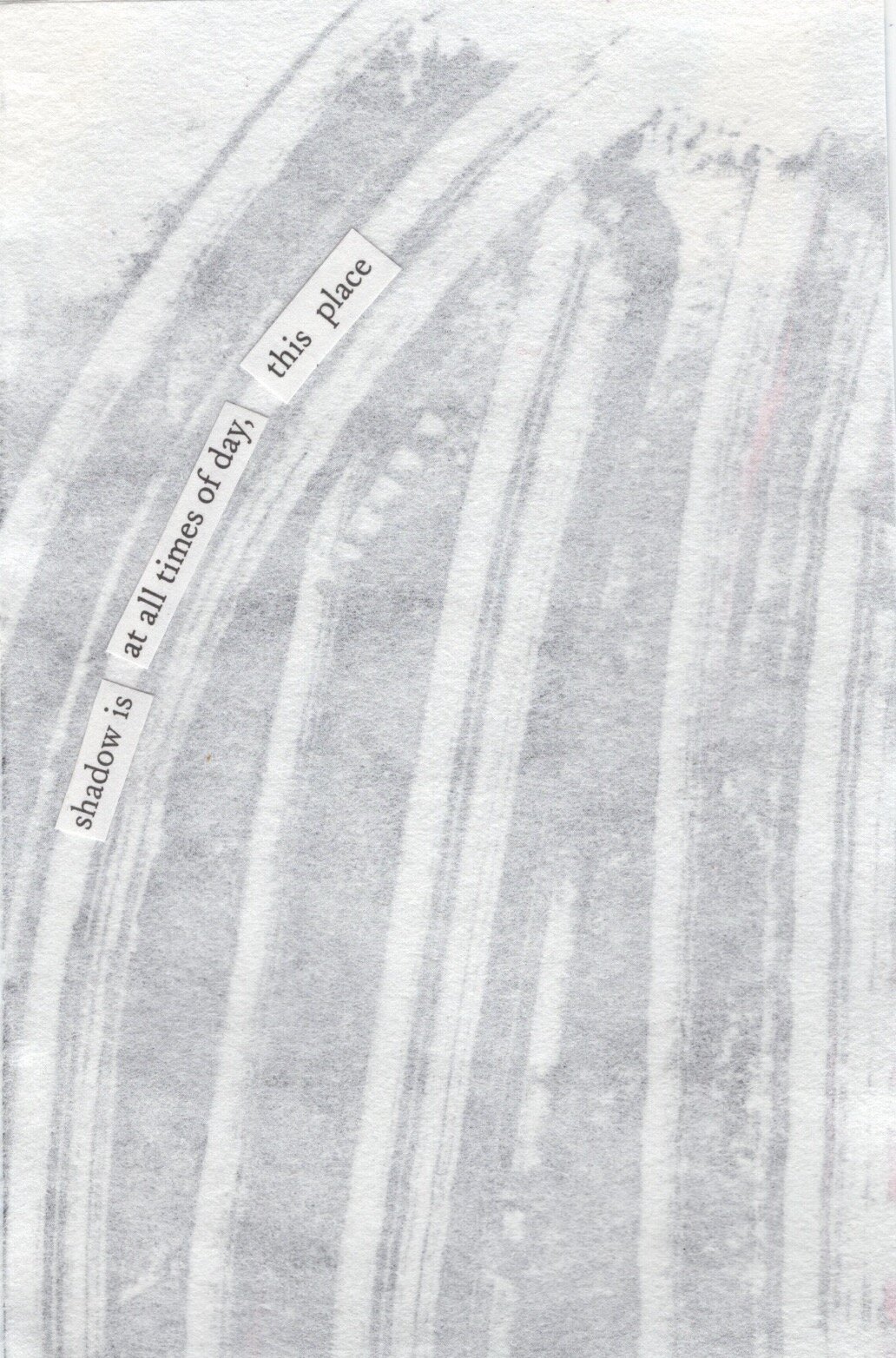Last month I was invited by Pacific Northwest College of Art’s Low Residency Creative Writing Program to participate in an EcoPoetics Workshop led by Allison Cobb, author of, “Plastic: An Autobiography.”
My definition of the word Anthropocene is Constellations of Scattered Bones & Hand Me Down Snippets, 2018, made mostly from beach collections
Prior to the class, I was asked to read Linda Russo’s “Counter Desecration: A Glossary for Writing Within the Anthropocene,” and to write my own definition of the word Anthropocene - a word I felt embarrassed to have never heard before.
Attempting to disregard my intimidation, I did a deep dive into Russo’s compiled glossary. I was comforted by the notion that this collection of curated definitions is presented as a guide of “roomy questions,” concerned less with answers and more with possibilities of uncovering new and future methods.
“ language: a living archive. A communal lung that holds and remembers all things through us. Made between our bodies, language lives everywhere. It travels and absorbs. A neural interconnectivity; the kinetic sensation is felt by all. It is composed of edges, imposes edges, but has no edges. It is a phenomenal organism, an extended nervous system that we all share. Capacious and metamorphic, infinitely adaptable, composed of and running through everything: all the meat of our bodies, this recyclable air, the earth and the universe that suspends it, all the physical spaces that contain us, and even all of the invisible, silent or silenced spaces where language rests, waiting for us to bring our attention through sound. Language absorbs all things: silt, soil, your ear against air, each word, earth against the mouth. To make room, in language, for language, listen closely. See repair.”
-Counter Desecration: A Glossary for Writing Within the Anthropocene, Danielle Vogel*
Interdisciplinary artist, Christine Howard Sandoval’s practice is also a glossary of definitions that unpack cultural, economic, and social framings similar to how Russo pinpoints intersections across and within disciplines that determine ecological relationships.
Christine Howard Sandoval, (Left to Right), Land Form II- Diversion (diptych), 2018, Land Form III-Mother Ditch (diptych), 2019, Land Form I-Distribution (diptych), 2018, Adobe mud and graphite on paper, 52 x 40 inches on view at Disjecta Contemporary Art Center as part of the exhibition Timelines For The Future
Exhibited at Disjecta Contemporary Art Center as part of Timelines For The Future, Howard Sandoval’s glossary is defined by materiality, situated within the specificity of contested lands of Native and Hispanic heritage.
The multi-media passage of sculpture, video installation and mixed media drawings in the work of Channel trace the history of complex relationships between agrarian societies with riparian rights and land uses in the present; poetically using language to also identify a multiplicity of meanings that a word can hold simultaneously.
Still Image of Christine Howard Sandoval’s Channel 2017, three-channel HD video with sound 7:43, taken during my visit to Disjecta Contemporary Art Center’s exhibition of Timelines For The Future, curated by Lucy Cotter
My experience encountering Channel within a gallery space felt like an invitation to be still and present in Howard Sandoval’s movements: her meandering walk, witnessing the carrying and placing of found offerings, her running her hand against the surface of the land, all the while hearing her footsteps, the water beneath her feet. I listened to her calming voice narrate:
“ Without water there is no irrigation. Without irrigation the land will be lost. Without the land base the family will disintegrate and without family the community will die. Without community the language will be lost. Without language we do not exist.”
In the EcoPoetics Workshop, Cobb discussed questions of ethics, desire, grief, trauma and responsibility (response - ability, ability to respond); burrowing further into the meaning of language through nets cast by etymologies.
Excerpts of etymology research shared by Allison Cobb during an EcoPoetics Workshop, 2021
I was asked to respond and use my ability to collect plastic and to pair words with my findings - to speak about a method in prose poetry. Methods could be a point of view, a sound, an approach or theme, a story -maybe it is image and metaphor.
In searching for methods to define Anthropocene, I was reminded of the Danish artist group, SUPERFLEX (established by Jakob Fenger, Bjørnstjerne Reuter Christiansen and Rasmus Nielsen). In 2019 they exhibited a large scale site-specific installation, It Is Not The End of The World, flooding Cisternerne, a former water reservoir turned underground contemporary art venue in Copenhagen.
Me walking through It Is Not The End of The World, by SUPERFLEX at Cisternerne in 2019 ((click for video and sound snippet)
It Is Not The End of The World used language to make both a declarative statement and instigate curious reactions, begging the question: if it isn’t the end of the world, then what is it?
In visiting this exhibition, viewers like myself became active participants, wading through the dark halls in provided waterproof boots, experiencing a dystopian future not that unlike our present and imagining a world void of humanity, but not the end of the world itself.
In the center of the exhibition was an exacting replica of the executive toilets of the Bonn headquarters of the United Nations Framework Convention on Climate Change (UNFCCC), flooded with commentary on global consequences caused by human consumption.
Almost a year after wading through the Cisternerne, I found myself in Portland, Oregon, talking with Jay Ponteri, Director of Low Residency MFA in Creative Writing at PNCA and the one who invited me to attend Cobb’s EcoPoetics Workshop.
It was by happenstance that we met beyond the virtual world of our online classroom. Our chance encounter was also simultaneously an unexpected opportunity to collect leftover materials from former students, of which was ironically a copy of Colors Magazine, specifically #82, a 2011 fall edition on Shit: A Survival Guide.
(Left) the cover of Colors Magazine #82, Shit: A Survival Guide under a pile of dog shit in the snow, (Right) Pages 6-7 of Diarrhea in the first section of Danger: Biohazard
The entire edition is exclusively and thoroughly dedicated to the topic of poop - its many names, stigmas, dangers and underrated resources from different locations around the world. It cites that nearly two-thirds of the world, who have no toilet, must live intimately with shit.
Colors Magazine #82, Shit: A Survival Guide, pages 44-45 from the chapter, Do-It-Yourself, referencing the work of Dr. Kamal Kar and the Community-Led Total Sanitation Foundation
A complicated aspect of defining Anthropocene is its entanglement with social and economic systems such as but not limited to capitalism, classism, settler colonialism, and systemic racism. Ten years later, Colors magazine could very well make an updated survival guide substituting the word shit for Anthropocene.
Yet, reducing a complex definition to a smelly pile of feces is about as paralyzing as the (valid) feelings of helplessness and grief that often results from discussions centered around climate change and environmentalism. Rather lets refer back to Linda Russo’s glossary. See repair.
“repair: begin with what you have. Here, a clutch of syllables tied with blue string - carnation, elderflower, gardenia, thyme, and thistle. A white candle. A ring of hair. Ink. Let it warp. To gather all absences through a door in a tongue. Silence to sound to skin, to restore all things. See language.”
-Counter Desecration: A Glossary for Writing Within the Anthropocene, Danielle Vogel*
Using Vogel’s definition of repair, I attempted to start with what I had. At the time Portland was experiencing a snow and ice storm and Portland General Electric was reporting at least 4,000 power lines down, leaving tens of thousands of people without power (myself included).
Wearing extra layers and taking cues from the late Dadaist, Tristan Tzara’s chance instructions on composing poetry, I took my copy of Shit: A Survival Guide and began to cut out text, rearranging them in a new order.
These words live in my latest installation, Sentences I Keep Near, forming a different type of survival guide.
Sentences I Keep Near, mixed media, 2020-21
*Edit 7/9/22 It has come to my attention that I incorrectly cited Linda Russo as defining language and repair While Russo compiled the glossary, these definitions were written by Danielle Vogel. “Counter Desecration: A Glossary for Writing Within the Anthropocene,” is a collection of ecopoetic definitions by a collection of various contributors.












